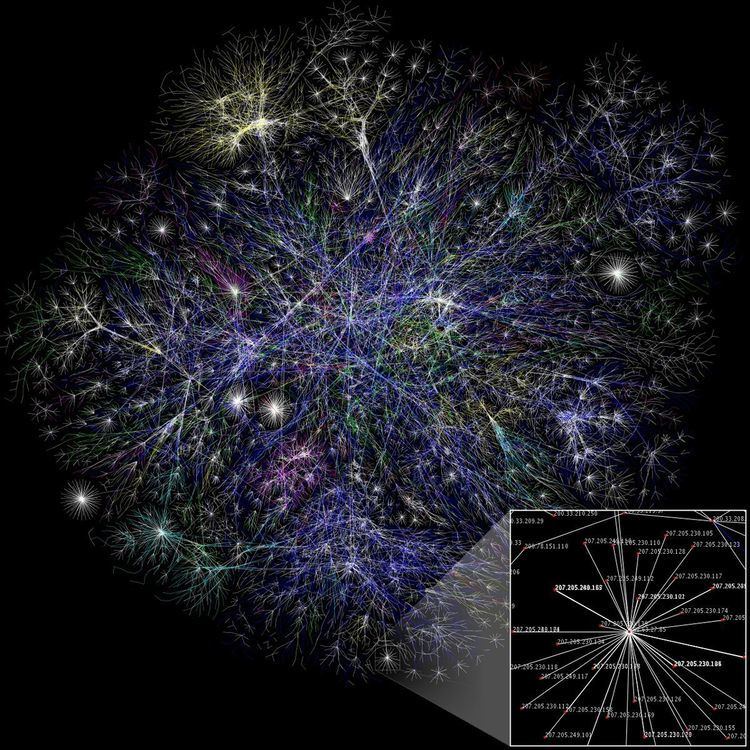 | ||
A Boolean network consists of a discrete set of Boolean variables each of which has a Boolean function (possibly different for each variable) assigned to it which takes inputs from a subset of those variables and output that determines the state of the variable it is assigned to. This set of functions in effect determines a topology (connectivity) on the set of variables, which then become nodes in a network. Usually, the dynamics of the system is taken as a discrete time series where the state of the entire network at time t+1 is determined by evaluating each variable's function on the state of the network at time t. This may be done synchronously or asynchronously.
Contents
Although Boolean networks are a crude simplification of genetic reality where genes are not simple binary switches, there are several cases where they correctly capture the correct pattern of expressed and suppressed genes. The seemingly mathematical easy (synchronous) model was only fully understood in the mid 2000s.
Classical model
A Boolean network is a particular kind of sequential dynamical system, where time and states are discrete, i.e. both the set of variables and the set of states in the time series each have a bijection onto an integer series. Boolean networks are related to cellular automata.
A random Boolean network (RBN) is one that is randomly selected from the set of all possible boolean networks of a particular size, N. One then can study statistically, how the expected properties of such networks depend on various statistical properties of the ensemble of all possible networks. For example, one may study how the RBN behavior changes as the average connectivity is changed.
The first Boolean networks were proposed by Stuart A. Kauffman in 1969, as random models of genetic regulatory networks but their mathematical understanding only started in the 2000's.
Attractors
Since a Boolean network has only 2N possible states, a trajectory will sooner or later reach a previously visited state, and thus, since the dynamics are deterministic, the trajectory will fall into a cycle. In the literature in this field, each cycle is also called an attractor (though in the broader field of dynamical systems a cycle is only an attractor if perturbations from it lead back to it). If the attractor has only a single state it is called a point attractor, and if the attractor consists of more than one state it is called a cycle attractor. The set of states that lead to an attractor is called the basin of the attractor. States which occur only at the beginning of trajectories (no trajectories lead to them), are called garden-of-Eden states and the dynamics of the network flow from these states towards attractors. The time it takes to reach an attractor is called transient time.
With growing computer power and increasing understanding of the seemingly simple model, different authors gave different estimates for the mean number and length of the attractors, here a brief summary of key publications.
Stability
The stability of Boolean networks depends on the connections of their nodes. A Boolean network can exhibit stable, critical or chaotic behavior. This phenomenon is governed by a critical value of the average number of connections of nodes (
For N-K-model the network is stable if
The state of a given node
If
If
The conditions of stability are the same in the case of networks with scale-free topology where the in-and out-degree distribution is a power-law distribution:
Sensitivity shows the probability that the output of the Boolean function of a given node changes if its input changes. For random Boolean networks,
Other topologies
One theme is to study different underlying graph topologies.
Other updating schemes
Classical Boolean networks (sometimes called CRBN, i.e. Classic Random Boolean Network) are synchronously updated. Motivated by the fact that genes usually not simultaneously changing their state, different alternatives have been introduced. A common classification is the following:
